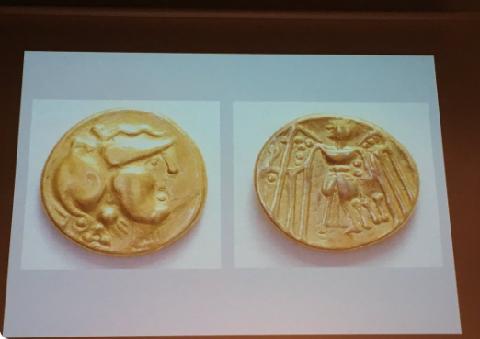
The coin is a Celtic imitation of the Alexander the Great stater, depicting Nike and Athena, and dates back to the first half of the 3rd century B.C.
This is a great and very significant discovery. Such coins are very rare even elsewhere in Europe, says Lucija Grahek, PhD, from the Institute of Archaeology at the ZRC SAZU Research Centre of the Slovenian Academy of Sciences and Arts. ‘This gold coin is precious even in the context of Europe, because the circumstances of the discovery are completely clear: a closed burial pit, the position of the belt is clearly visible and, what is more, organic materials have been preserved on the belt. We will perhaps be able to apply radiocarbon dating to it, which will increase its worth and contribute to the development of Slovenian and European science,’ added Grahek.
The graves also contained pottery and iron grave goods – spears, fibulae, belt buckles etc. 15 graves all together have been unearthed at the site. Most of the graves date back to the 4th century B.C., while some, like the bronze fibulae from the La Tène Era, date even back to the 3rd century B.C.
The analysis of all the found objects will follow and more will be known about the ways of burial, as the graves contained almost no human remains, said the researcher. Once the professional work and scientific publication are finalized, the findings will be handed over to the Bela Krajina Museum in Metlika.


































































